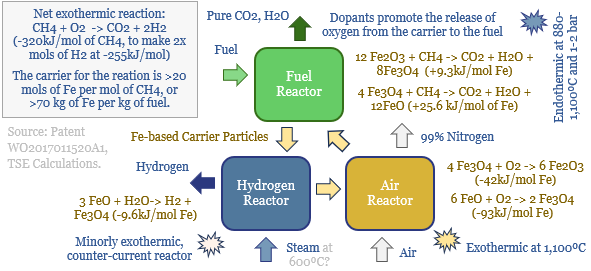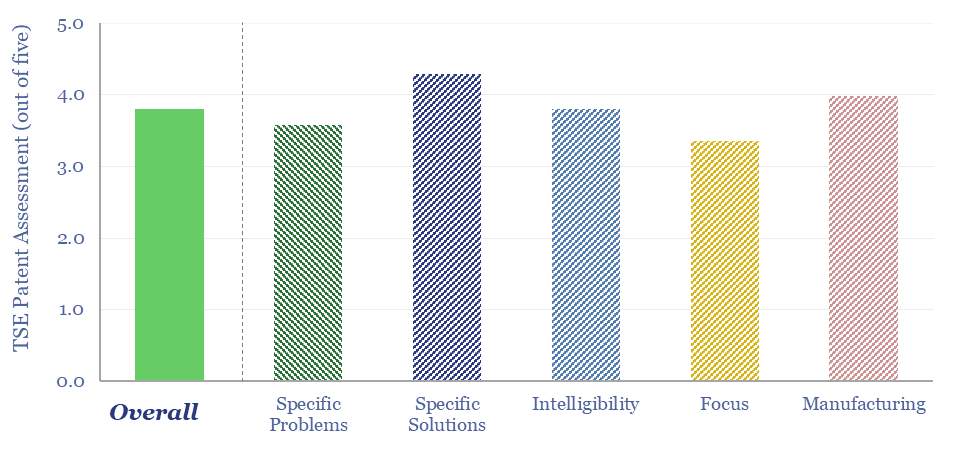Is Babcock and Wilcox’s BrightLoop technology a game-changer for producing low-carbon hydrogen from solid fuels, while also releasing a pure stream of CO2 for CCS? Conclusions and deep-dive details are covered in this data-file, allowing us to guess at BrightLoop’s energy efficiency and a moat around Babcock’s reactor designs?
Chemical Looping Combustion harvests the energy from a fuel, while also producing a relatively pure stream of CO2, by avoiding the oxidation of the fuel in air (78% nitrogen) and instead circulating solid carrier particles through separate reactors (schematic below).

We first wrote about decarbonized carbon in 2019, in a note that identified NET Power’s Allam Cycle Oxy-Combustion process as the leading concept in the space. NET Power has since become a public company with $1.7bn market cap at the time of writing.
Hence what other decarbonized carbon technologies are worth watching? Since 2023, Babcock & Wilcox has been vociferously describing its BrightLoop technology, which is a Chemical Looping Combustion (CLC) technology generating clean hydrogen from hydrocarbon fuels (e.g., coal, biomass, waste or possibly gas).
Babcock & Wilcox is an American energy services company, founded in 1867, headquartered in Akron, Ohio, with 2300 employees, listed on NYSE. It has a $100M market cap at the time of writing, targeting $1bn pa of revenues in 2024 and $100-110M of EBITDA.
Could BrightLoop be a gamechanger? Babcock has said that BrightLoop “greatly reduces the amount of energy and fossil fuel required to produce hydrogen”. And its costs can be “better than current large-scale hydrogen generation technologies such as SMR”. It has been piloted in three locations since 2014. The first commercial unit is in development. And the company has said BrightLoop ultimately has the potential to generate another $1bn pa in revenues.
Hence how does BrightLoop technology work? We have reviewed Babcock’s BrightLoop patents in order to address this question. The image below is based on some guesswork from one of three patents in particular.

We think the patents are high-quality, enabling us to guess at the reaction conditions and energy economics of BrightLoop. Conclusions and deep-dive details are covered in this data-file. We also found many underlying components that are locked up with patents.
Future variants of BrightLoop are also suggested by the patents, which could produce both CO and H2, for clean methanol or Fischer-Tropsch fuels.

